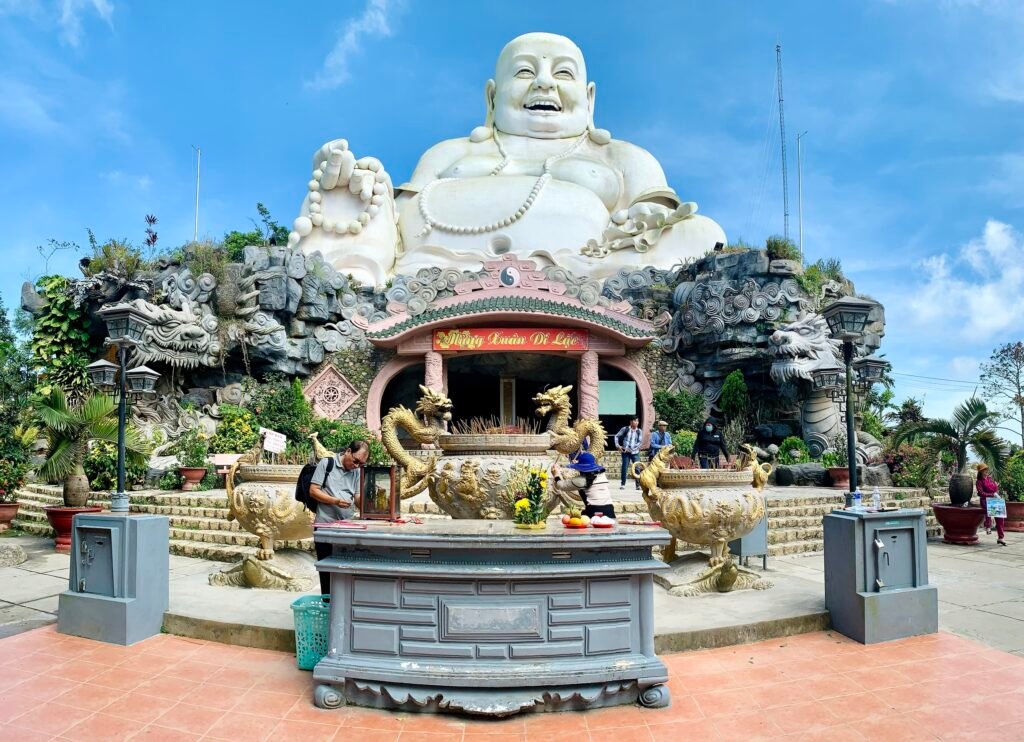Introduction:
Nestled in the heart of the Mekong Delta, tucked within the province of An Giang, Vietnam, lies a hidden gem of historical significance – the Oc Eo Archaeological Site. This fascinating destination presents an unparalleled opportunity for those intrigued by the whispers of the past, keen to uncover the remnants of an ancient kingdom. Known as the cradle of the Funan Kingdom, it is a must-see destination for history buffs and cultural enthusiasts.
Journeying into History: Exploring the Oc Eo Archaeological Site
The Oc Eo Archeological Site is not just a place; it is a journey back in time. As one steps into this sprawling site, the aura of the ancient Funan Kingdom seems almost palpable. The site is a testament to the advanced civilization that existed between the 1st and 7th centuries AD, marking their presence with an array of artifacts, relics, and architectural fragments. The excavations here have uncovered remnants of roads, canals, and structures that paint a vivid picture of an organized, prosperous society deeply engaged in trade and crafts.
Walking through this site, one can’t help but marvel at the rich craftsmanship of the Funan people, evident in the intricately designed pottery, jewelry, and statues unearthed here. Among these, the bronze statues and the stone linga (a symbol used in the worship of the Hindu deity Shiva) stand out, indicating the Funan Kingdom’s religious inclinations. These artifacts, displayed at the An Giang Museum and the Museum of Vietnamese History in Ho Chi Minh City, offer a tantalizing glimpse into the kingdom’s vibrant past.
Discovering Funan: The Ancient Kingdom Hidden in An Giang, Vietnam
Oc Eo is more than just an archeological site; it is the heart of the ancient Funan Kingdom, a civilization that reigned long before the rise of the Khmer Empire. Unraveling the history of Funan through the findings at Oc Eo provides a fascinating insight into a society that was an integral part of the maritime Silk Road. The kingdom’s strategic location enabled it to control and flourish through the trade between India and China.
The discovery of Roman coins and Persian ceramics at the site further substantiates the trade links, painting a picture of a bustling, cosmopolitan kingdom. The Funanese were known for their hydraulic expertise, and the site provides evidence of their water management systems, a testament to their advanced engineering skills. The kingdom’s decline remains a mystery, adding an air of alluring enigma to the site.
Description of the Attraction:
The Oc Eo Archaeological Site spans an area of nearly 450 hectares, offering a rich tapestry of historical intrigue. The most prominent feature of the site is the mound of Thap Muoi, home to numerous unearthed artifacts. Another noteworthy point is the Ba The Mountain, believed to have been a religious center of the Funan Kingdom. The mountain offers a stunning panoramic view of the surrounding landscape, further enhancing the experience of the visitors.
The local culture around the site resonates with the spirit of the ancient kingdom. The people of An Giang, often seen wearing their traditional attire, Nón lá (conical hat), and Áo Dài, continue to practice traditional crafts, contributing to the site’s unique charm.
Things to Do:
Visitors can engage in a range of activities at the site. Walking tours provide a detailed overview of the site’s historical significance. For those interested in the artifacts, a visit to the An Giang Museum is a must. The museum houses a large collection of artifacts, including statues, ceramics, and coins, each with a story of its own.
Local Tips:
The site is open year-round, though the best time to visit is during the dry season, from November to April. Comfortable shoes are advisable due to the extensive walking involved. Remember to respect the local customs and traditions while exploring the site.
How to Get There:
The site, located about 7km from the provincial capital, Long Xuyen, is easily accessible by car or bus. From Ho Chi Minh City, it’s a five-hour journey by road.
Nearby Attractions:
Visitors may also want to explore the Sam Mountain and the Tra Su Forest, both located within a short distance from the site.
Conclusion:
The Oc Eo Archeological Site is a treasure trove of historical relics that offer a rare insight into a long-lost civilization. A visit to this site is not just a trip, but a voyage into a fascinating past. So, get ready to step into the pages of history and unlock the secrets of the ancient Funan Kingdom. Your journey awaits!






